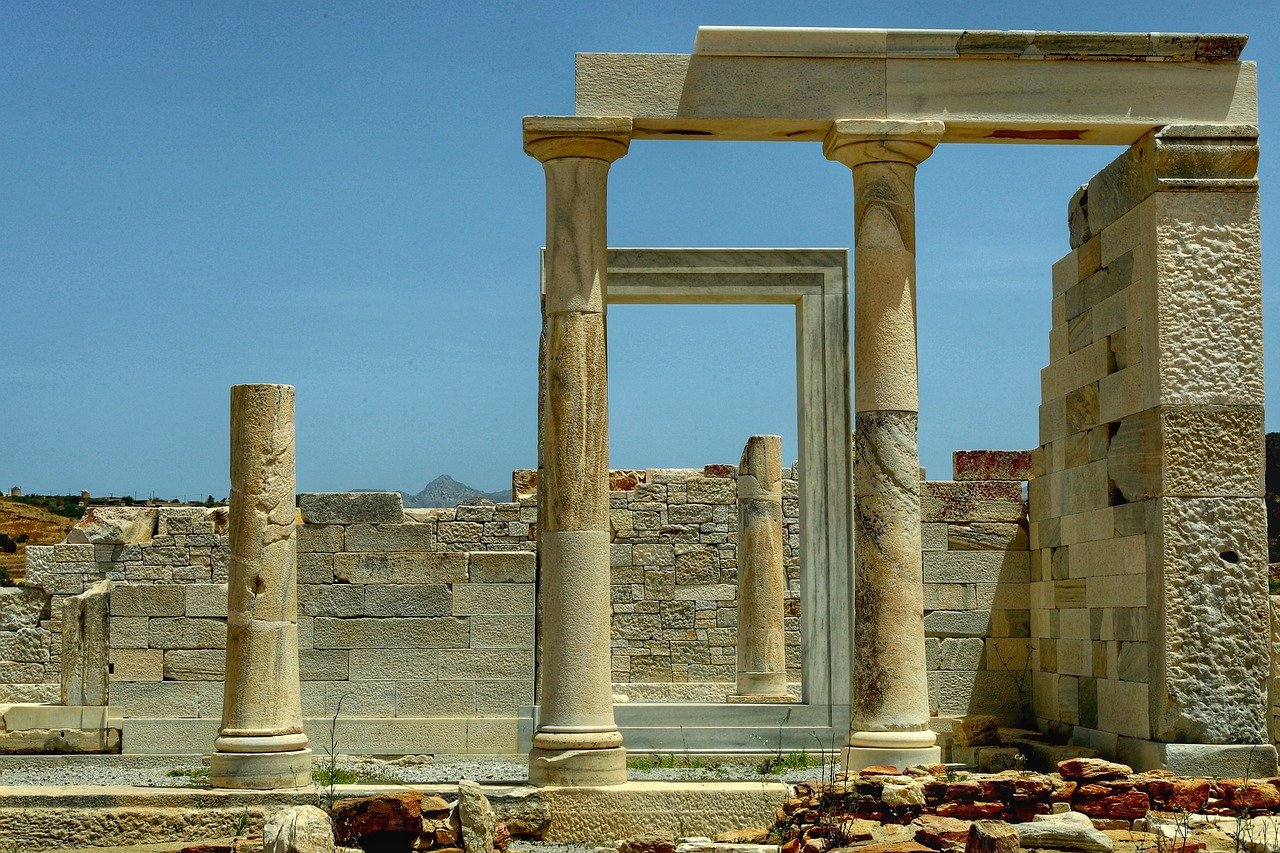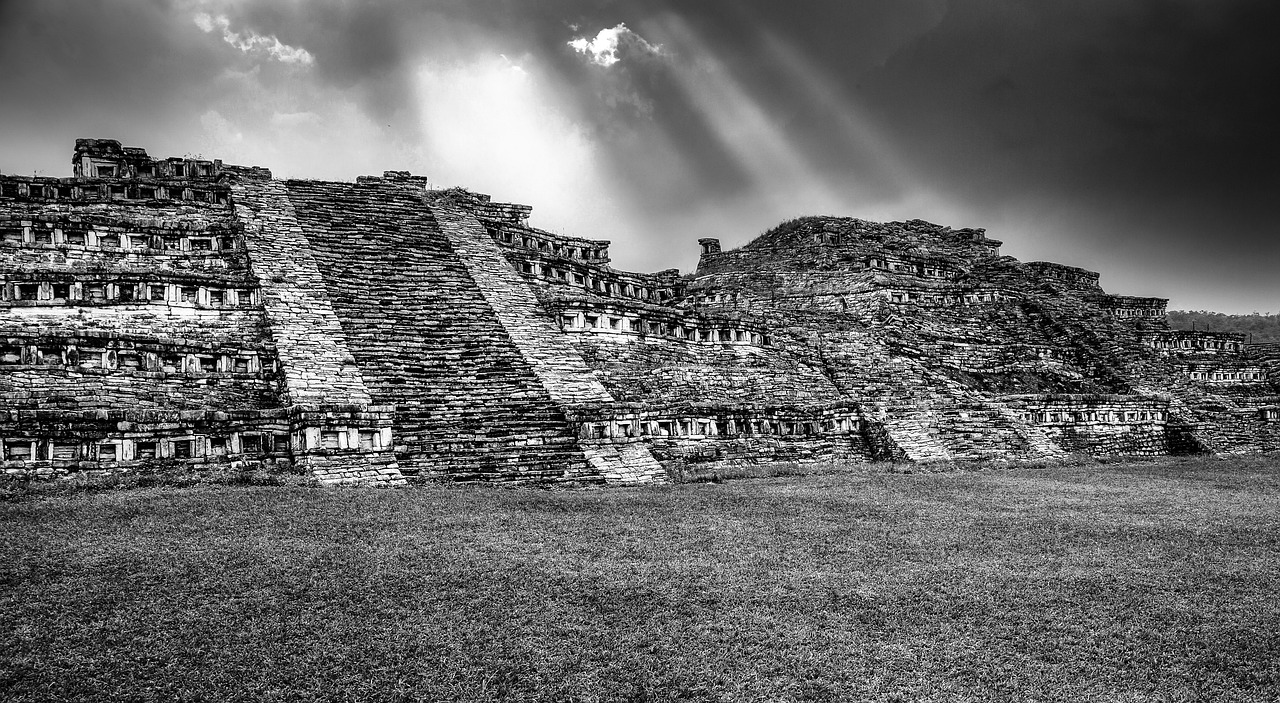The Secrets of Ancient Civilizations' Writing Systems
Have you ever wondered about the mysterious symbols and glyphs that ancient civilizations used to communicate and record their history? The writing systems of ancient societies hold a wealth of secrets waiting to be uncovered, offering us a glimpse into the lives and cultures of our ancestors. From Egyptian hieroglyphs to Mayan glyphs, each civilization had its unique way of writing that played a crucial role in shaping their identity and preserving their knowledge.
Let's embark on a journey through time and explore the intricate world of ancient writing systems. Imagine deciphering the elaborate Egyptian hieroglyphs, each symbol telling a story of gods, pharaohs, and daily life along the Nile. These intricate characters were not just pictures but a sophisticated script that captured the essence of Egyptian beliefs and traditions, giving us a window into their worldview.
Now, shift your focus to the cuneiform writing of Mesopotamia, where clay tablets bore the marks of early human civilization. The Sumerians and Babylonians etched their thoughts and laws into these tablets, creating a legacy that paved the way for modern communication. Each wedge-shaped symbol represented a sound or concept, forming a language that transcended time and space.
As we journey further, we encounter the enigmatic Indus Valley script, a puzzle that continues to baffle historians and archaeologists. The signs and symbols found on seals and tablets hint at a sophisticated society with a written language of its own, yet the meaning remains elusive, sparking debates and theories that echo through the ages.
Picture the ancient Chinese sages consulting oracle bones, seeking answers from the spirit world through divination. These inscriptions evolved into the intricate characters of modern Chinese script, a testament to the enduring power of written language to convey meaning and preserve wisdom.
From the knotted cords of the Incan quipu to the carved glyphs of the Olmec civilization, each writing system tells a story of innovation and adaptation. The Rongorongo script of Easter Island stands as a silent witness to a lost language, challenging us to unravel its secrets and unlock the knowledge hidden within its enigmatic symbols.
As we delve into the secrets of ancient civilizations' writing systems, we not only uncover the past but also gain a deeper appreciation for the power of language to connect us across time and space. These scripts are more than just words on a page; they are windows into the souls of those who came before us, speaking to us in a language that transcends the boundaries of time.

Egyptian Hieroglyphs
Egyptian Hieroglyphs, one of the most iconic writing systems in ancient history, captivate scholars and enthusiasts alike with their intricate beauty and profound meanings. These ancient Egyptian symbols, meticulously carved into temples, tombs, and papyri, served as a form of communication that transcended mere words. Each hieroglyph represented a concept, a sound, or even a whole word, offering a glimpse into the beliefs, daily life, and monumental events of the ancient Egyptian civilization.
The complexity of Egyptian hieroglyphs lies not only in the vast number of symbols but also in their varied functions. From religious texts honoring the gods to historical inscriptions detailing pharaohs' triumphs, these hieroglyphs were versatile in recording a wide range of information. Imagine standing before the Great Pyramid of Giza, its massive stone blocks adorned with hieroglyphic stories that have withstood the test of time, preserving the legacy of a civilization shrouded in mystery.
Deciphering Egyptian hieroglyphs was a monumental task that puzzled scholars for centuries until the discovery of the Rosetta Stone provided a key to unlocking their secrets. This ancient artifact, inscribed with the same text in Greek, Demotic, and hieroglyphs, offered a crucial link in understanding the meanings behind these enigmatic symbols. Through meticulous study and comparison, linguists and archaeologists pieced together the grammar and vocabulary of this ancient script, shedding light on the language and culture of ancient Egypt.
Exploring the world of Egyptian hieroglyphs is like embarking on a journey through time, unraveling the stories of pharaohs, gods, and everyday Egyptians immortalized in stone. The beauty of these symbols lies not only in their visual appeal but also in the depth of meaning they convey, transcending mere words to encapsulate the essence of a civilization that thrived along the banks of the Nile.

Cuneiform Writing
Cuneiform writing, originating from ancient Mesopotamia, is one of the earliest known forms of written expression in human history. The term "cuneiform" itself means "wedge-shaped," reflecting the distinctive wedge-shaped marks made by a reed stylus on clay tablets. These clay tablets, when baked, served as enduring records of administrative, economic, and religious matters in ancient Mesopotamian societies.
The development of cuneiform writing can be traced back to the Sumerians, who inhabited the region of southern Mesopotamia. Over time, this script evolved and was adopted by other cultures, including the Akkadians, Babylonians, and Assyrians. Cuneiform was primarily used for writing on clay tablets, which were then stored in archives or libraries, making it a crucial medium for preserving knowledge and historical records.
One fascinating aspect of cuneiform writing is its versatility. It was not limited to a single language but was adapted to write various languages, including Sumerian, Akkadian, Elamite, Hittite, and Urartian. This adaptability allowed cuneiform to become a lingua franca of the ancient Near East, facilitating communication and trade among diverse cultures.
Deciphering cuneiform script has been a monumental task for modern scholars due to the sheer complexity and vast number of signs involved. The script comprised hundreds of signs representing syllables, logograms, and determinatives, making it a challenging system to decode. Through the efforts of dedicated epigraphists and linguists, significant progress has been made in unraveling the secrets of cuneiform writing and understanding the rich history it encapsulates.

Mayan Glyphs
The Mayan civilization, known for its advanced knowledge in astronomy, mathematics, and architecture, also developed a sophisticated writing system using glyphs and symbols. These intricate glyphs were used to record historical events, religious rituals, and important information on stelae, codices, and temple walls. Each glyph represented a syllable or a word, combining logographic and phonetic elements to convey meaning. The Mayan script is considered one of the most complex writing systems of the ancient world, with hundreds of unique symbols that required extensive study to decipher.
Mayan glyphs were often arranged in blocks or columns, read in a combination of vertical and horizontal sequences. Some glyphs were phonetic, representing sounds in the Mayan language, while others were logograms, representing entire words or concepts. The intricate nature of Mayan glyphs allowed scribes to record detailed historical accounts, religious ceremonies, and astronomical observations with precision and complexity.
Deciphering Mayan glyphs has been a challenging task for scholars, as many of the codices and inscriptions were destroyed during the Spanish conquest of the Americas. Through comparative studies of surviving texts and the use of linguistic analysis, researchers have made significant progress in understanding the meanings behind these ancient symbols. The Mayan script provides valuable insights into the language, culture, and history of this advanced Mesoamerican civilization.
Exploring Mayan glyphs offers a fascinating glimpse into the intellectual achievements of the ancient Mayan people, showcasing their ingenuity in developing a sophisticated writing system that captured the richness of their culture and knowledge. The intricate beauty of Mayan glyphs continues to intrigue researchers and enthusiasts alike, highlighting the enduring legacy of this remarkable civilization.

Indus Valley Script
The Indus Valley Civilization, one of the oldest known urban civilizations, left behind a mysterious script that continues to baffle scholars and archaeologists. The script, consisting of various signs and symbols found on seals, tablets, and pottery, poses a significant challenge in deciphering its true meaning and purpose. Despite numerous attempts by experts, the Indus Valley script remains undeciphered, leading to ongoing debates and speculations about its origins and function.
One of the key characteristics of the Indus Valley script is its non-alphabetic nature, with over 400 distinct symbols identified so far. These symbols are arranged in various combinations, suggesting a form of written communication that possibly represented the language spoken by the inhabitants of the ancient Indus Valley cities. The lack of bilingual inscriptions or known equivalents in other ancient scripts adds to the complexity of deciphering the Indus Valley script.
Archaeologists have discovered a large number of seals with short inscriptions, believed to be names or titles of individuals, along with longer inscriptions on pottery and tablets. The uniformity of the script across different artifacts indicates a standardized system of writing, hinting at a well-organized society with a developed form of communication and record-keeping.
Despite the challenges in deciphering the script, ongoing research and technological advancements offer hope for unlocking the secrets of the Indus Valley civilization's writing system. Scholars continue to analyze the patterns, frequencies, and contexts of the symbols in an effort to crack the code and gain insights into the social, political, and economic aspects of this ancient civilization.

Chinese Oracle Bones
Chinese Oracle Bones provide a fascinating glimpse into the ancient practice of divination in Chinese culture. Dating back to the Shang Dynasty, these oracle bones were used by diviners to communicate with ancestors and deities by inscribing questions on the bones and interpreting the resulting cracks. The early Chinese characters found on these bones are considered some of the earliest forms of Chinese writing, laying the foundation for the complex script used in modern Chinese language.
The inscriptions on Chinese Oracle Bones not only served as a means of divination but also provided valuable historical insights into the beliefs, rituals, and governance of the Shang Dynasty. These inscriptions often recorded important events, such as wars, sacrifices, and offerings, shedding light on the social and political structures of ancient Chinese society. The oracle bones were crucial in understanding the religious and spiritual practices of the time, offering a unique window into the worldview of the Shang people.
Deciphering the inscriptions on Chinese Oracle Bones has been a challenging yet rewarding endeavor for archaeologists and linguists. The intricate characters carved onto the bones require careful study and comparison with known Chinese script to unlock their meanings. Through these efforts, scholars have been able to piece together the ancient texts, revealing details about the Shang Dynasty's language, customs, and interactions with the spiritual realm.

Incan Quipu
Uncovering the fascinating world of the Incan quipu reveals a sophisticated non-alphabetic writing system that served as a method of record-keeping and communication within the Inca Empire. The quipu, consisting of knotted cords made from llama or alpaca wool, was used to convey numerical and narrative information through the arrangement, color, and knotting of cords.
Each quipu was unique, with different colors, knot types, and cord arrangements carrying specific meanings. Scholars believe that the Incan quipu was primarily used for accounting purposes, such as recording census data, tracking agricultural production, and managing the empire's vast resources.
Deciphering the intricate language of the quipu requires a deep understanding of the Incan culture and the symbolic significance attached to different knot patterns and cord combinations. While the exact method of reading quipus remains a subject of debate among historians and archaeologists, the quipu's importance in Incan society as a tool for communication and information storage is undeniable.

Olmec Script
The Olmec civilization, one of the oldest in Mesoamerica, left behind a puzzling script that has intrigued archaeologists and linguists for decades. Carved into stone monuments and pottery, the Olmec script consists of symbols and glyphs that are believed to represent their language and possibly religious or cultural concepts. Despite numerous efforts, the exact meaning of these symbols remains elusive, leading to ongoing debates and challenges in deciphering this ancient writing system.
Researchers have studied the Olmec script in conjunction with other Mesoamerican writing systems, such as the Mayan glyphs, in an attempt to unlock its secrets. Some believe that the Olmec script may have influenced later Mesoamerican civilizations in the development of their own writing systems. However, due to the limited number of surviving inscriptions and the lack of a bilingual text for comparison, deciphering the Olmec script continues to be a complex and unresolved task.
One of the notable features of the Olmec script is its use of symbolic imagery, including human figures, animals, and abstract designs. These symbols are thought to convey both concrete and abstract meanings, reflecting the rich artistic and cultural heritage of the Olmec civilization. The intricate nature of the script suggests a sophisticated level of communication and a deep connection to the spiritual beliefs and practices of the Olmec people.
Efforts to decipher the Olmec script involve a combination of linguistic analysis, comparative studies with related scripts, and archaeological evidence. Scholars hope that future discoveries of inscriptions or artifacts containing longer texts in the Olmec script may provide the breakthrough needed to unlock its meaning. Until then, the Olmec script remains a tantalizing enigma, offering glimpses into the ancient civilization's language and worldview, yet withholding its full significance.

Rongorongo Script
The Rongorongo script is a fascinating and perplexing ancient writing system that remains largely undeciphered to this day. Carved onto wooden tablets on Easter Island, these enigmatic glyphs have puzzled researchers and linguists for centuries. The script consists of intricate symbols and glyphs that are arranged in rows and read from left to right, resembling a form of writing. However, the meaning and purpose of the Rongorongo script continue to elude modern understanding, leading to various theories and speculations.
One of the most intriguing aspects of the Rongorongo script is its exclusivity to Easter Island, with no known connection to any other writing system in the world. This isolation has made deciphering the script a monumental challenge, as there are no known bilingual texts or Rosetta Stone equivalent to aid in translation. The lack of a clear understanding of the language spoken by the Rapa Nui people, who created the script, further complicates efforts to unlock its secrets.
Researchers have identified over 120 unique Rongorongo symbols, each representing a different concept or word. Some glyphs appear to depict animals, plants, or geometric shapes, while others remain abstract and open to interpretation. The arrangement of these symbols on the tablets suggests a structured system of writing, hinting at a sophisticated form of communication used by the ancient inhabitants of Easter Island.
Despite numerous attempts to decipher the Rongorongo script, progress has been slow and contentious. Scholars have proposed various hypotheses regarding the script's purpose, ranging from a form of ceremonial or religious writing to a method of recording historical events or genealogies. The lack of consensus among experts underscores the complexity and mystery surrounding this enigmatic writing system.
Frequently Asked Questions
- What is the significance of ancient civilizations' writing systems?
Ancient civilizations' writing systems are crucial in understanding the history, culture, and beliefs of past societies. They provide valuable insights into how these civilizations communicated, recorded information, and preserved their knowledge for future generations.
- How were Egyptian hieroglyphs deciphered?
Egyptian hieroglyphs were deciphered through the discovery of the Rosetta Stone, which contained inscriptions in Greek, Demotic, and hieroglyphic scripts. Scholars used this key to unlock the meanings of hieroglyphs and understand the ancient Egyptian language.
- What materials were used for cuneiform writing?
Cuneiform writing was primarily inscribed on clay tablets using a stylus. These tablets were then dried or fired to preserve the text. Cuneiform was also used on other materials like stone, metal, and parchment for various purposes.
- How did the Mayans use their glyphs in communication?
The Mayans used glyphs not only for writing but also as a form of art and communication. Glyphs were inscribed on stelae, codices, and temple walls to convey historical events, religious beliefs, and cultural practices of the Mayan civilization.
- What challenges exist in deciphering the Indus Valley script?
The Indus Valley script poses challenges due to the lack of a bilingual text or known translation. The script's brevity and the limited number of inscriptions make it difficult to establish a definitive understanding of the language and symbols used.
- How were Incan quipus used for record-keeping?
Incan quipus consisted of knotted cords of different colors and lengths, which represented numerical and narrative information. They were used for record-keeping, accounting, and communication within the Inca Empire, showcasing the advanced organizational skills of the Incas.
- What theories surround the undeciphered Rongorongo script?
The Rongorongo script of Easter Island has sparked various theories, including suggestions of Polynesian origins, mnemonic devices, or a form of proto-writing. The lack of a definitive translation has led to ongoing debates and controversies among scholars.



















